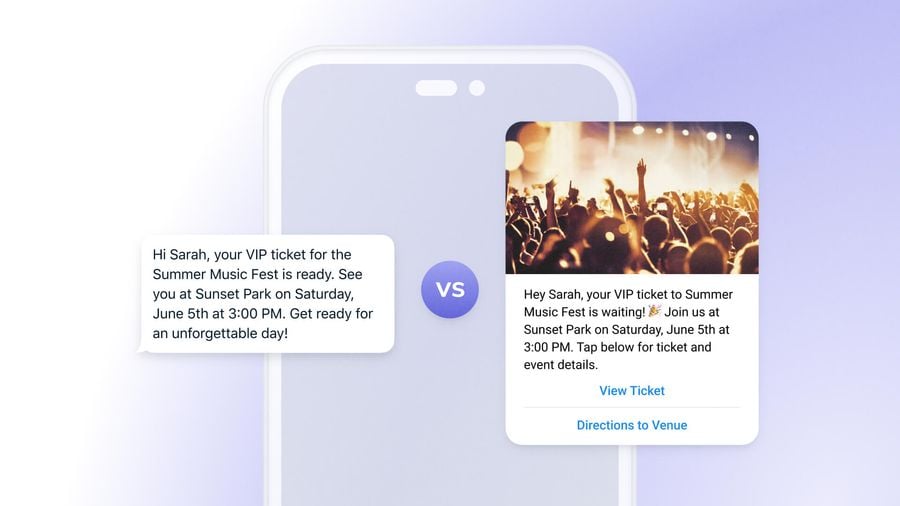Imagine receiving two text messages. One is from a random five-digit shortcode with a plain text offer—easy to ignore or dismiss as spam. The other? A message from a verified brand, complete with its logo, official name, and interactive buttons that let you explore products or claim a discount in just one tap. Which one are you more likely to engage with?
While SMS marketing has been a longstanding staple in mobile messaging, RCS is rapidly emerging as a formidable successor. It offers enriched features that allow businesses to send branded, interactive messages which look and feel like mini mobile apps without requiring a separate download.
What is SMS?
Short Message Service (SMS) is a text messaging service that has been widely used for decades. It allows for the transmission of short text messages (up to 160 characters) over a cellular network. Despite its simplicity, SMS remains a core component of mobile and text message marketing due to its universal compatibility across devices and carriers.
Key features of SMS:
- Supports only plain text with a 160-character limit
- Works on all mobile devices and carriers
- No internet connection required
- Limited branding opportunities (messages appear as generic shortcodes or numbers)
What is RCS?
Rich Communication Services (RCS) is an advanced messaging protocol designed to replace SMS by providing a more interactive and media-rich experience. Unlike SMS, RCS operates over mobile data or Wi-Fi, allowing businesses to send high-resolution images, videos, and even interactive elements like buttons, carousels, and suggested replies.
Key features of RCS:
- Supports rich media (images, videos, GIFs, and files)
- Interactive elements (quick replies, action buttons, carousels)
- Branded sender identities (verified logos, names, and colors)
- Read receipts and typing indicators
- Requires an internet connection (Wi-Fi or mobile data)
Key differences between SMS and RCS
| Feature | SMS | RCS |
|---|---|---|
| Media Support | Text only | Rich media (images, videos, buttons) |
| Character Limit | 160 characters | No limit |
| Interactivity | None | Buttons, quick replies, carousels |
| Branded Sender | No (generic shortcode or number) | Yes (verified brand identity) |
| Delivery Status | Only "delivered" | Read receipts and typing indicators |
| Internet Connection | Not required | Required (Wi-Fi or data) |
| Use Cases | One-time passwords, appointment reminders, transactional alerts, emergency notifications, basic promotional messages |
Branded promotions, product showcases, customer support chat, interactive surveys, rich media campaigns, personalized engagement |
